When it comes to pests that can damage the wooden structures of your home, distinguishing between carpenter ants vs termites is crucial. These two insects may seem similar at a glance, but their behavior, the damage they cause, and the methods needed to control them are quite different. In this blog post, we will explore how to identify carpenter ants vs termites, the signs of their presence, and effective solutions for managing these pests.
Differentiating Carpenter Ants vs Termites
Understanding the key differences between termites vs carpenter ants is essential for accurately identifying and effectively managing these destructive pests. One of the easiest ways to differentiate between termite vs carpenter ants is by examining their physical characteristics:
Physical Differences
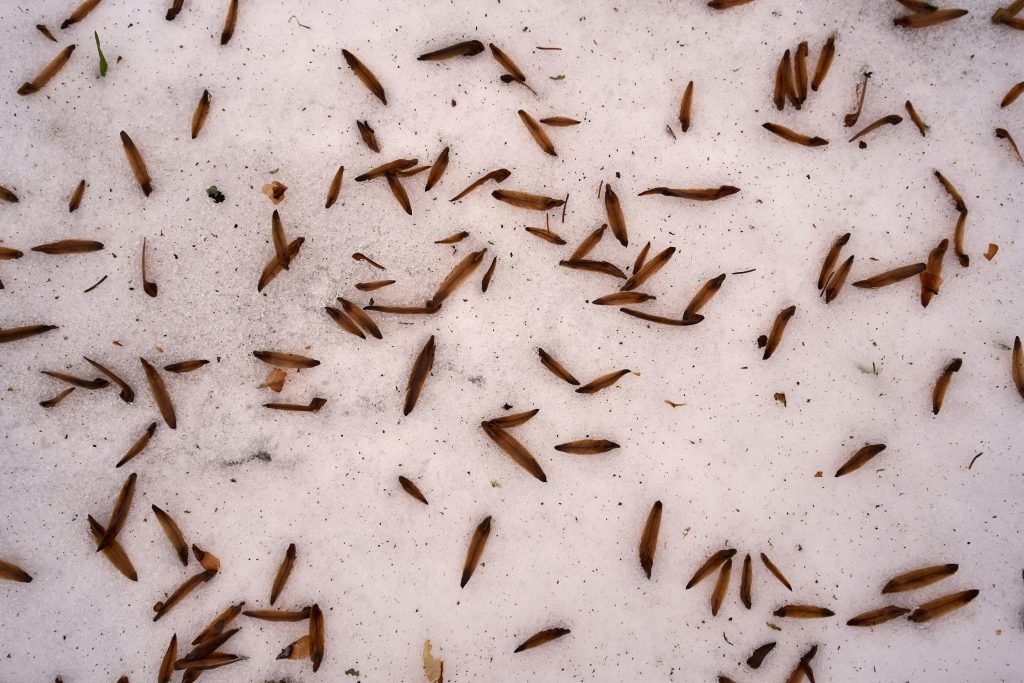
Termites have a uniform width and broad waists, while carpenter ants possess narrow waists with distinct segments. When examining carpenter ants with wings vs termites, termites have four wings of equal size that are paddle-shaped and twice as long as their body, whereas carpenter ants feature larger front wings compared to their back wings, which are pointy and often veiny. Additionally, termites display straight antennae, whereas carpenter ants have bent (elbowed) antennae.
Behavior and Habitat
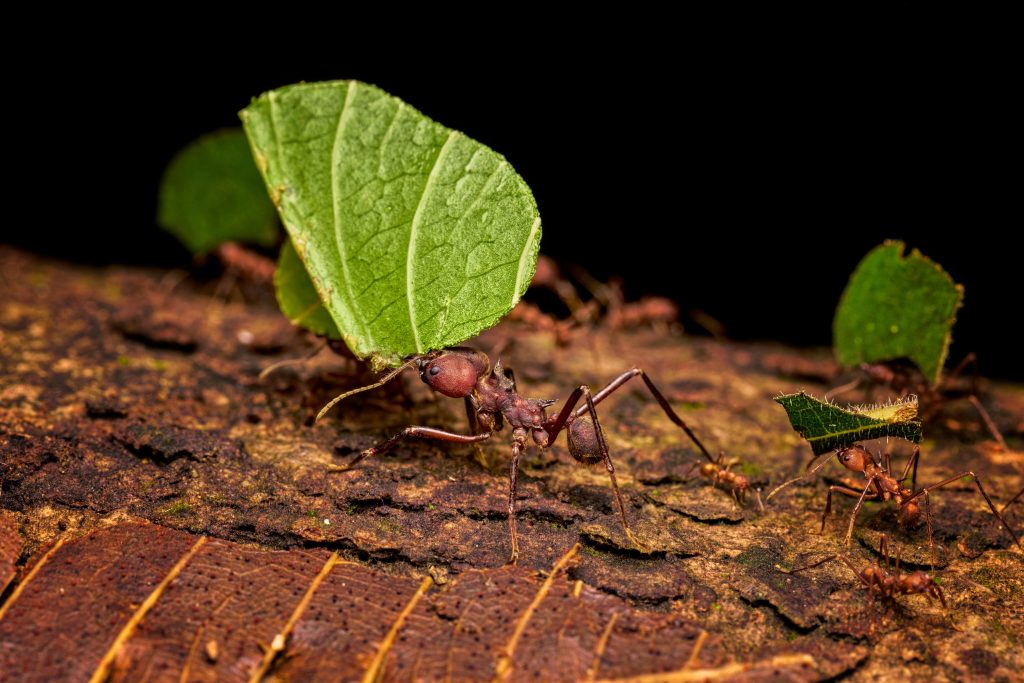
Understanding the behavior and habitat of carpenter ants vs termites can significantly aid in identifying an infestation. Termites eat wood and can cause extensive damage quickly, often found in dry wood and cracks in brick or cement structures.
In contrast, carpenter ants nest in wood, preferring moist, softer wood. They do not eat the wood but instead excavate it to create nests, leaving behind characteristic sawdust, often referred to as carpenter ants vs termites sawdust.
Signs of Carpenter Ants vs Termites
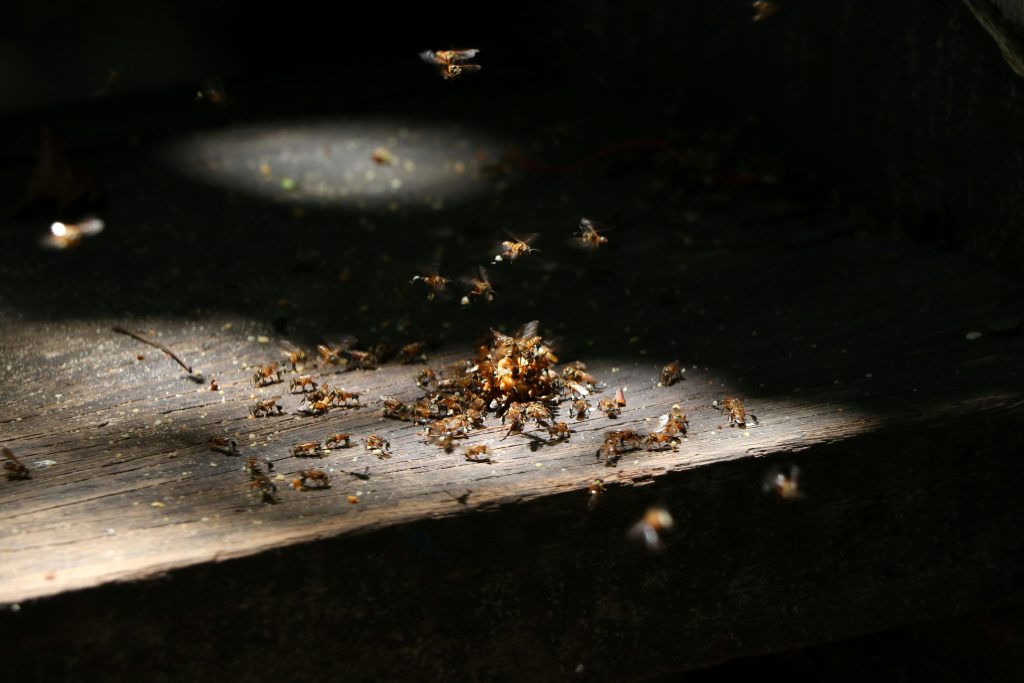
Recognizing the signs of carpenter ants vs termites is important for early detection and effective management of these pests.
Common Signs
Recognizing the signs of carpenter ants vs termites can help in early detection and prevention of infestations. Faint rustling or scratching noises within walls often indicate ant activity. Small piles of sawdust from carpenter ants or soil mounds from termites suggest nesting.
Consistent ant trails to and from a wall can reveal a hidden colony. Additionally, damaged walls exhibiting soft spots, cracks, or bubbling/peeling paint are signs of structural weakening from termite vs carpenter ant damage.
Specific Indicators of Carpenter Ant Damage vs Termite Damage
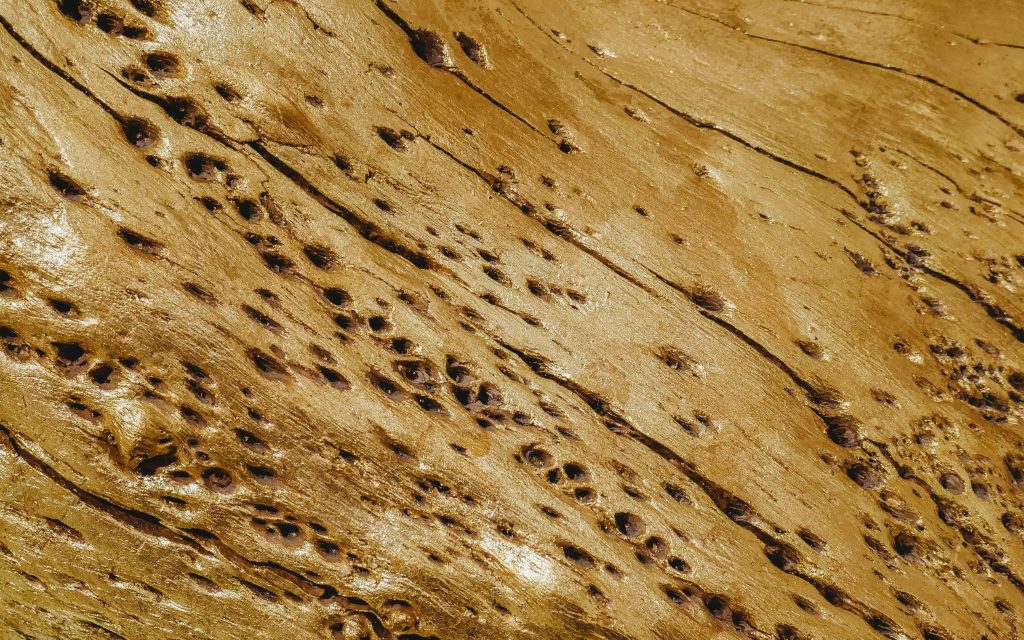
Specific indicators of carpenter ant damage vs termite damage can help distinguish between these pests. Termites leave behind rough tunnels filled with soil and fecal pellets, whereas carpenter ants create smooth, polished galleries. In terms of droppings, termite droppings are small, hard pellets, while carpenter ants leave wood shavings and insect remains.
Additionally, both insects have winged reproductive forms, but termites have uniform wings, while carpenter ants have larger front wings, making it easier to identify which pest is causing the damage.
Carpenter Ant Larvae vs Termite Larvae
Carpenter ant larvae vs termite larvae exhibit distinct differences that are key to identifying an infestation. Carpenter ant larvae are small, white, and legless, with a slightly curved, grub-like appearance. They rely on worker ants to feed and care for them, developing within the secure confines of their smooth, excavated galleries.
In contrast, termite larvae are also white and legless but are more uniform in shape, resembling miniature versions of adult termites. These larvae develop within the communal, mud-filled tunnels of their colony, nurtured by the worker termites.
Effective Solutions for Carpenter Ants vs Termites
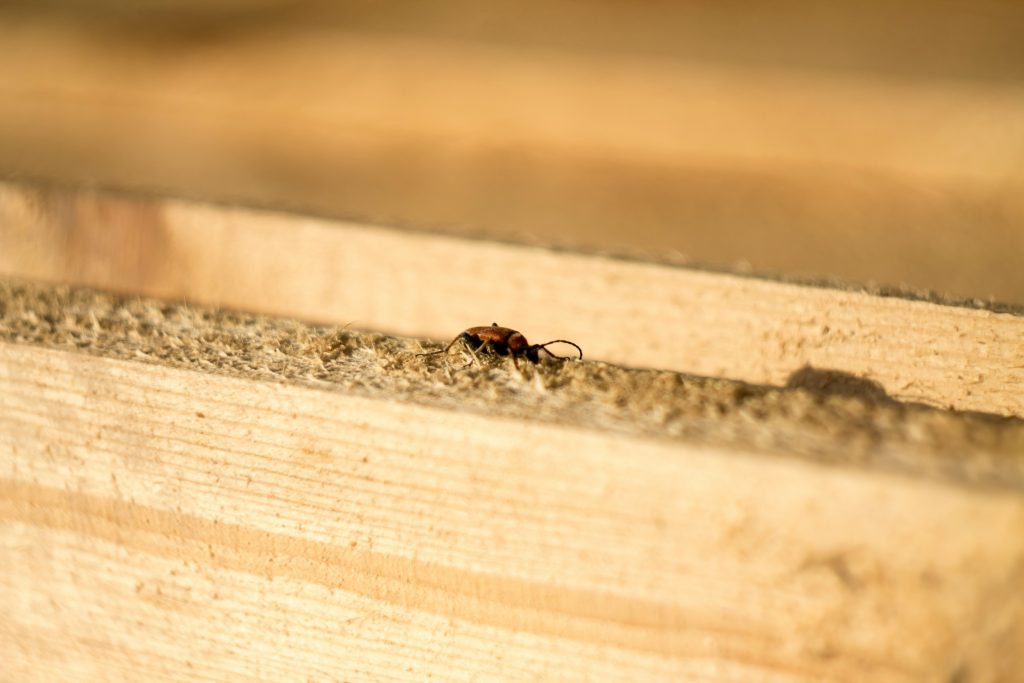
Implementing effective solutions for carpenter ants vs termites is essential for eliminating these pests and preventing further damage to your home.
Natural Remedies
Natural remedies can offer temporary relief but are usually insufficient for severe infestations. Diatomaceous earth can be sprinkled around the base of suspected walls to target ants, while peppermint oil can be applied around suspected areas to deter ants. Vinegar, particularly white vinegar and apple cider vinegar, is sometimes suggested as a natural termite remedy due to its acetic acid content, which can dehydrate and kill termites, but it is generally not effective for eliminating entire colonies.
Call NaturalCare Pest Control

For reliable long-term solutions, professional pest control Houston Texas services are recommended. Our skilled technicians use bait stations to effectively draw ants out and poison their colonies, while sealing entry points to prevent new ants from entering and trapping those inside.
With a commitment to eco-friendly and family-safe methods, NaturalCare Pest Control ensures comprehensive and lasting results. Professional intervention is essential; consult with NaturalCare Pest Control experts for a thorough assessment and specialized treatments tailored to effectively combat your ant infestation and protect your home for years to come.
Preventive Measures
Once the immediate problem is addressed, consider long-term strategies to prevent future infestations. Ensure your home is well-sealed, keep food sources tightly covered, fix any moisture issues, and routinely check for signs of re-infestation.
Conclusion: Carpenter Ants vs Termites
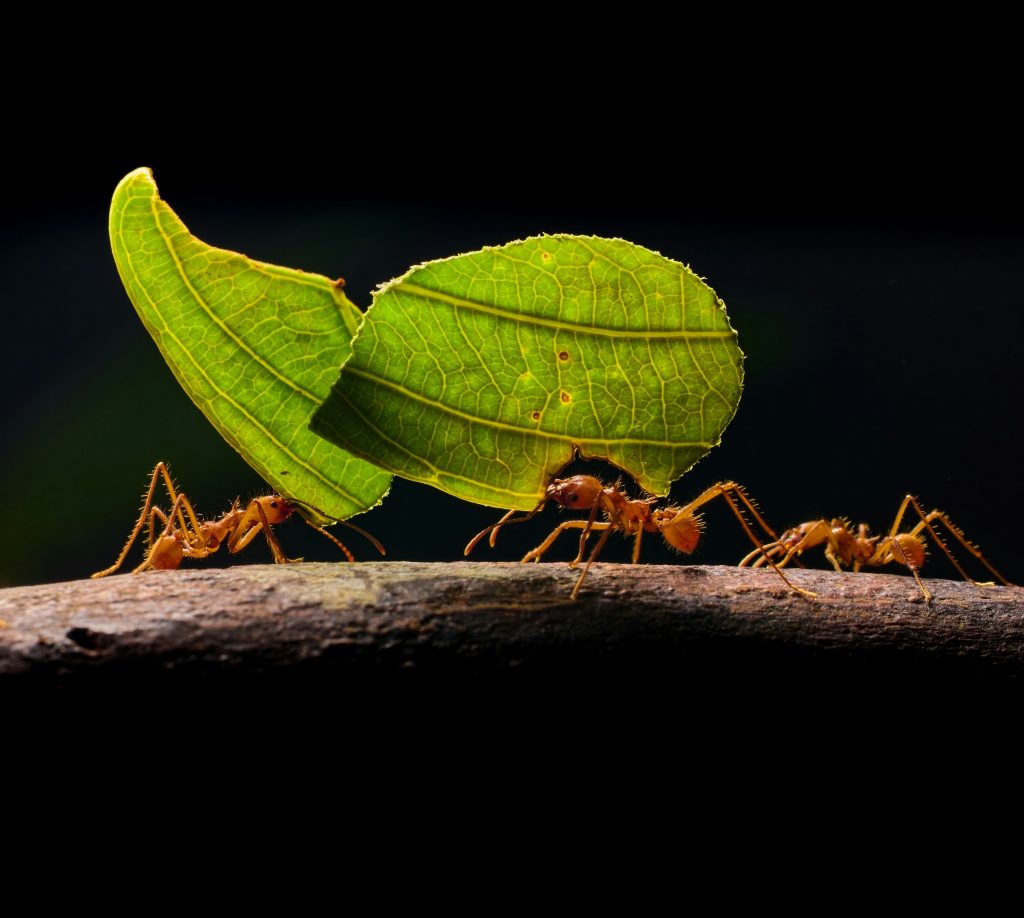
Identifying and managing carpenter ants vs termites effectively requires a keen understanding of their differences. While natural remedies can provide temporary relief, professional pest control ensures comprehensive and lasting solutions.
At NaturalCare Pest Control, we offer expert services to help you tackle these pests and protect your home from damage. Contact us today to schedule a consultation and take the first step towards a pest-free environment.
By understanding the signs and behaviors of carpenter ants vs termites, you can ensure your home remains safe and secure from these damaging pests.
Frequently Asked Questions About Carpenter Ants vs Termites
How can seasonal changes affect carpenter ants vs termites infestations?
Carpenter Ants: More active during warm months and may enter homes in search of food. They are less active during colder months but can still damage wood if the nest is indoors.
Termites: Remain active year-round, with some species swarming in the spring or fall. Subterranean termites are particularly active in moist conditions and can remain hidden, causing damage throughout the year.
Are carpenter ants vs termites affected by different climates?
Carpenter Ants: Prefer cooler, temperate climates and are commonly found in wooded areas. They thrive in moist environments, often invading homes with water-damaged wood.
Termites: Can adapt to a variety of climates, with different species preferring different environments. Subterranean termites thrive in moist, warm conditions, while drywood termites prefer drier, warmer climates.
How do carpenter ants vs termites respond to different treatment methods?
Carpenter Ants: Treatments typically involve baiting, insecticidal sprays, and dusts. Sealing entry points and removing food sources are also effective in controlling infestations.
Termites: Treatment methods include liquid termiticides, baiting systems, and physical barriers. Professional treatments are often necessary for severe infestations.
What are the signs of carpenter ants vs termites activity during the night?
Carpenter Ants: Active at night, carpenter ants can often be seen foraging for food, particularly around kitchens and food storage areas.
Termites: Termites are less likely to be seen, as they typically remain hidden within their tunnels. Swarming termites may be visible in the evening during mating seasons.


